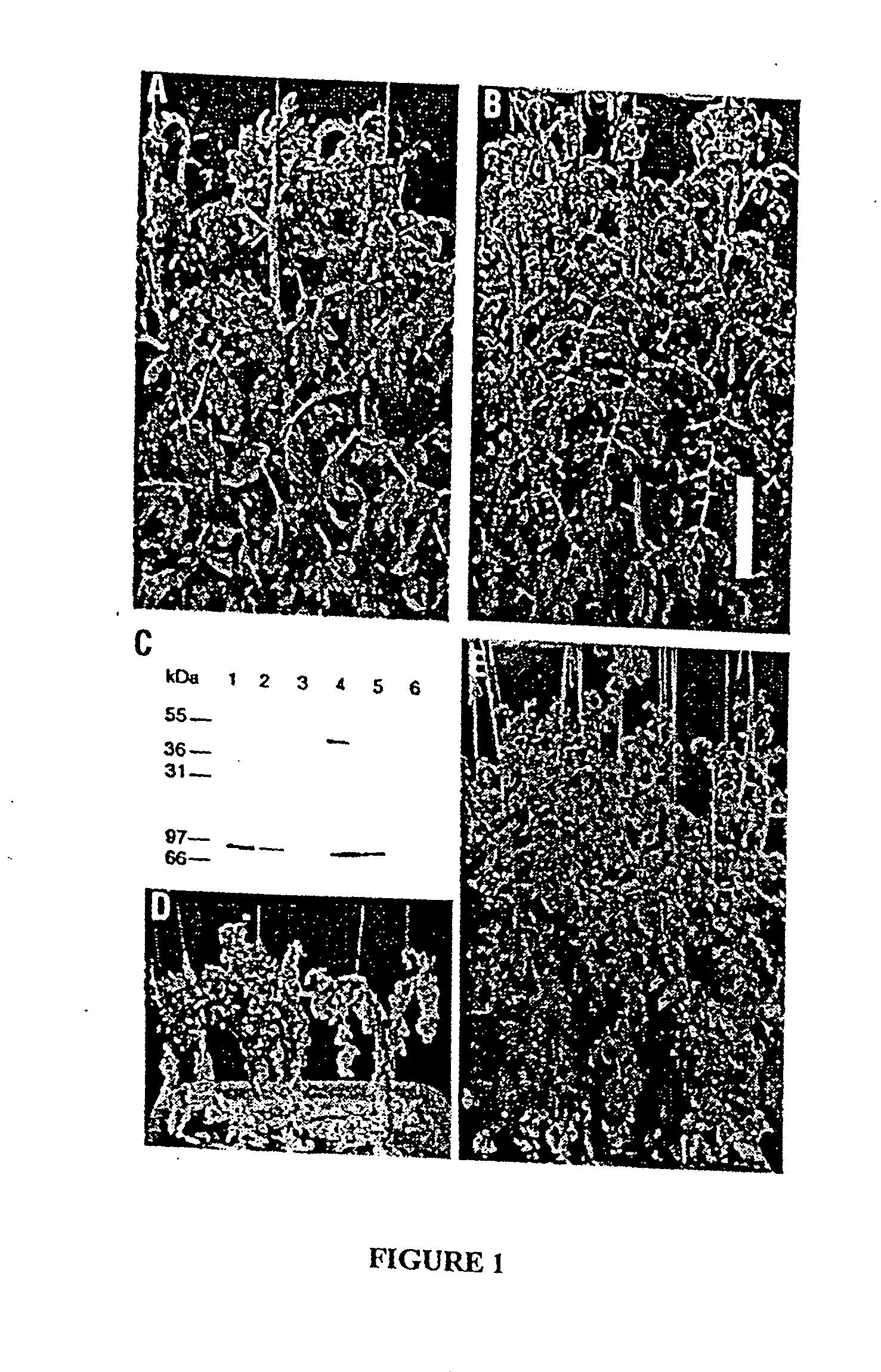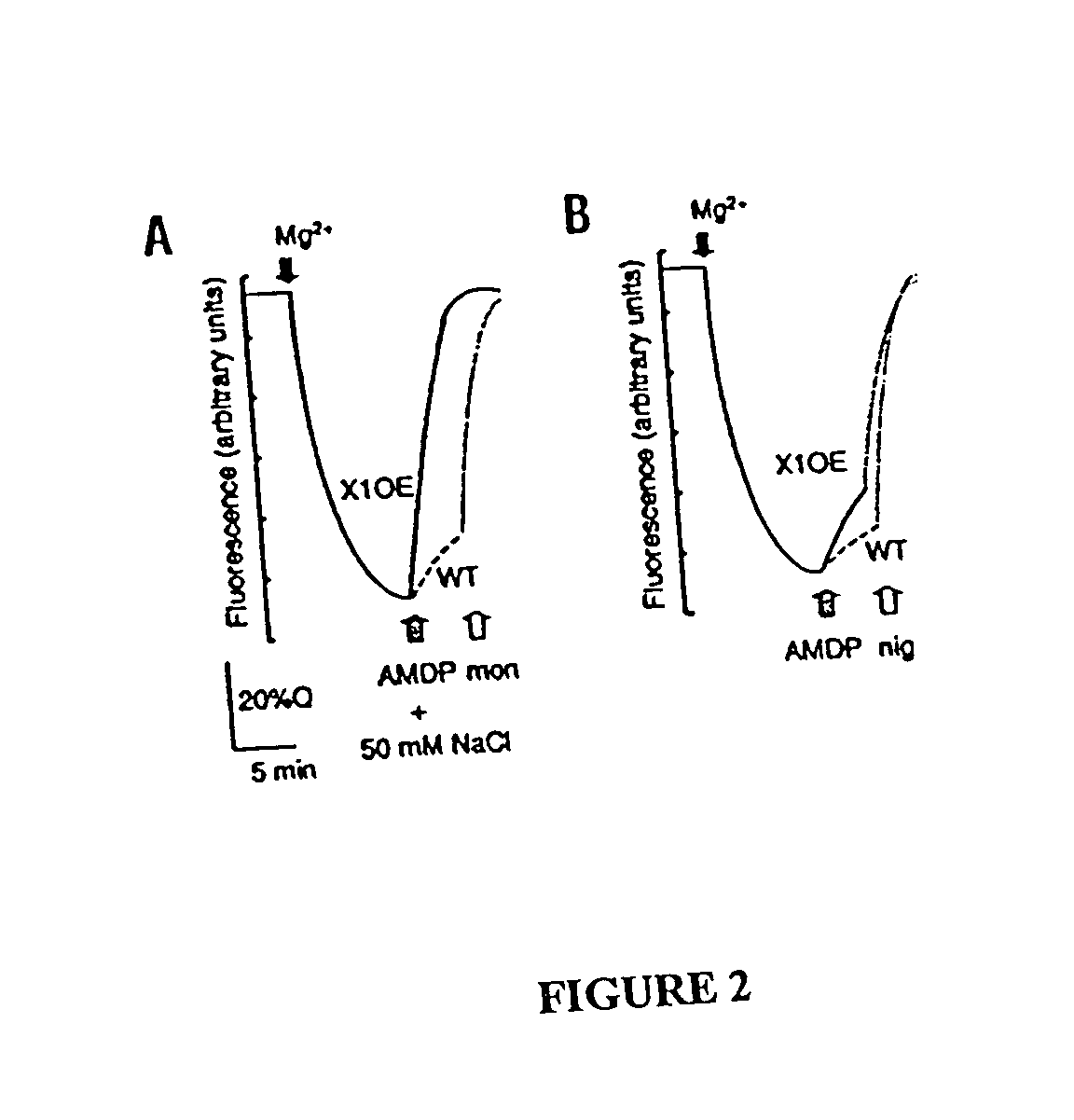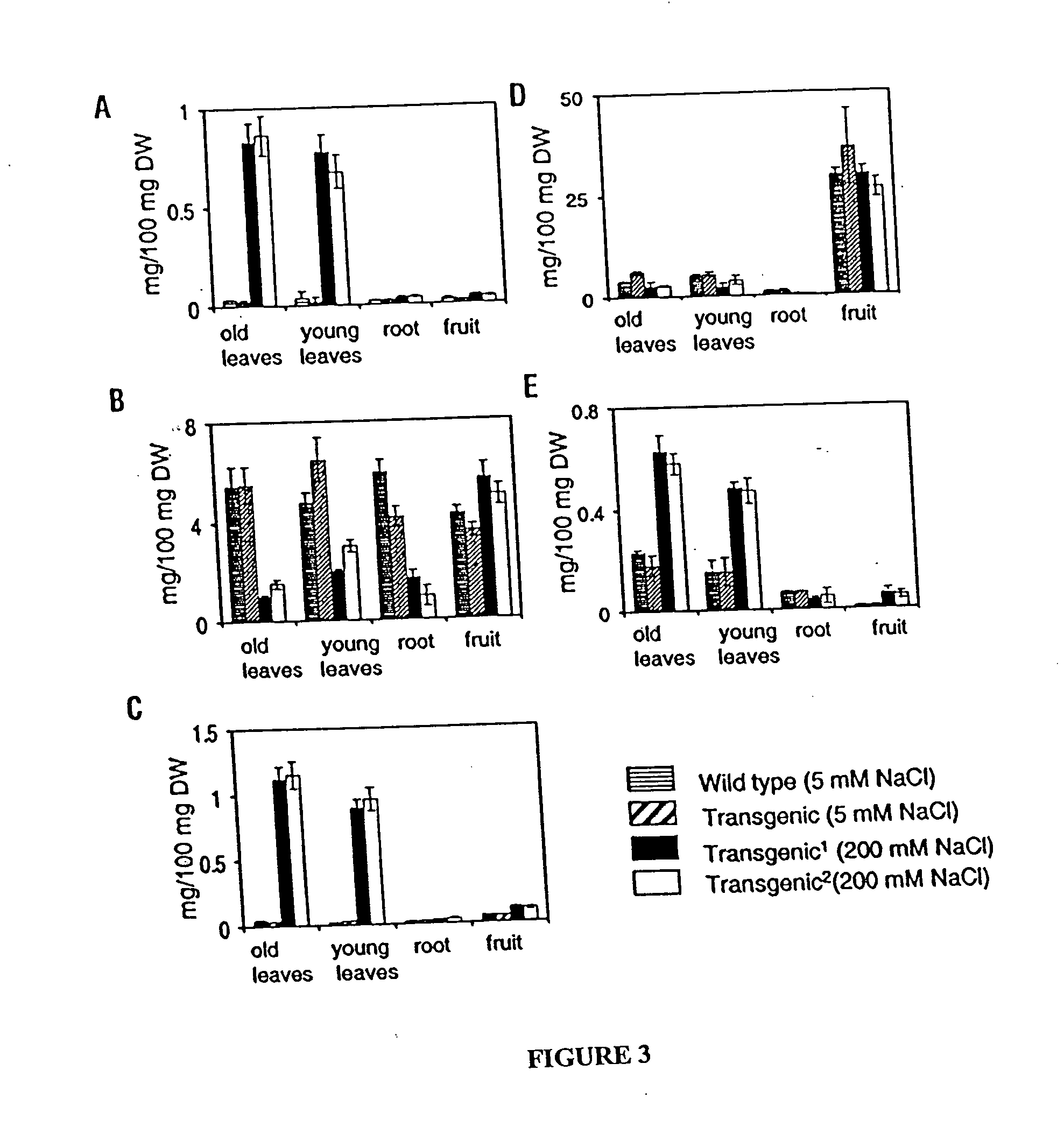High salt plants and uses for bioremediation
a bioremediation and high salt technology, applied in the field of agricultural biotechnology, can solve the problems of large areas of the indian subcontinent being rendered unproductive, destroying ancient and recent agrarian societies, and high cost of measures
- Summary
- Abstract
- Description
- Claims
- Application Information
AI Technical Summary
Benefits of technology
Problems solved by technology
Method used
Image
Examples
example 1
Materials and Methods
Plant Material.
[0091] Seeds of Brassica napus cv. Westar were rinsed with running water for two days, surface-sterilized with a solution of 10% commercial bleach (0.525% sodium hypochlorite) and 0.1% SDS for 5 min and washed three times with sterile distilled water. Seeds were germinated on Murashige and Skoog medium (MS). Cotyledon explants were excised from 7 day-old seedlings. The binary Ti vector pBI121 was used for transformation. (Jefferson, et al. (1987)) The GUS gene of the binary vector was replaced with the AtNHX1 gene to gain the new expression construct pHZX1. The new construct was electroporated into Agrobacterium tumefaciens strain LBA4404. For co-cultivation, 1 ml of pHZX1 containing LBA4404 Agrobacterium was inoculated into 15 ml LB medium containing 50 mg.l-1 kanamycin, 50 mg.l-1 rifampicin and 200 μM acetone-syringone. The culture was incubated one day at room temperature under constant shaking (250 rpm) and then diluted one time with liqui...
example 2
Experimental Protocol
Plant Material and Transgenic Plants.
[0103]Lycopersicon esculentum (cv Moneymaker) seeds were germinated on Murashige and Skoog medium (MS). Cotyledon explants were excised from 7 day-old seedlings, cut in half and cultured overnight on a one day-old feeder layer consisting of 3 ml of a 7 day-old sugar beet suspension culture plated and overlaid with a sterile Whatman filter paper. The binary Ti vector pBI121 was used for transformation. The GUS gene of the binary vector was replaced with the AtNHX1 gene to gain the new expression construct pHZX1. pHZX1 was electroporated into Agrobacterium tumefaciens strain LBA4404. For co-cultivation, 1 ml of pHZX1 containing Agrobacterium were inoculated into 15 ml LB medium containing 50 mg / l kanamycin, 50 mg / l rifampicin and 200 μM acetone-syringone. After two days of co-cultivation with Agrobacterium, the explants were transferred to selective regeneration medium. (Thomas, et al. (1981)) Regenerated shoots were transf...
example 3
Expression of NHX-Related Gene Products in Saccharomyces Cerevisiae.
[0113] Expression of NHX-related gene products in yeast is useful to assess and characterize the biochemical properties of the recombinant and native polypeptides. Expression in yeast also facilitates the study of interactions between different NHX-related gene products. Once function has been verified in yeast, the targeting to vacuoles may be verified in plants. We have made conditional expression constructs by ligating the coding region of the AtNHX1 cDNA into two vectors, pYES2 (Invitrogen) and pYEP434. Both constructs provide galactose-inducible expression, but pYES2 has a URA3 selectable marker while pYEP434 has LEU2 as a selectable marker. Transformation by lithium acetate, 1994), is followed by selection on solid media containing amino acids appropriate for the selection of cells containing the transformation vector. For integrative transformation, the YXplac series of vectors for integrative transformatio...
PUM
| Property | Measurement | Unit |
|---|---|---|
| Temperature | aaaaa | aaaaa |
| Temperature | aaaaa | aaaaa |
| Fraction | aaaaa | aaaaa |
Abstract
Description
Claims
Application Information
 Login to View More
Login to View More - R&D
- Intellectual Property
- Life Sciences
- Materials
- Tech Scout
- Unparalleled Data Quality
- Higher Quality Content
- 60% Fewer Hallucinations
Browse by: Latest US Patents, China's latest patents, Technical Efficacy Thesaurus, Application Domain, Technology Topic, Popular Technical Reports.
© 2025 PatSnap. All rights reserved.Legal|Privacy policy|Modern Slavery Act Transparency Statement|Sitemap|About US| Contact US: help@patsnap.com



